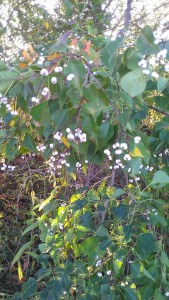Qiang Yang, Jianqing Ding, Evan Siemann

Plant pathogens and herbivores can maintain forest diversity by reducing survival of tree seedlings close to other members of the same species (conspecifics). However, a tree species introduced to a new range may escape such natural enemies, especially more specialized ones that are thought to contribute strongly to distance- dependent mortality, which may cause distance-dependent processes to vary between their native vs. introduced ranges.
We here examined the roles of natural enemies in distance-dependent mortality for the invasive Chinese tallow tree (Triadica sebifera) in its native (China) and introduced (United States) ranges. In both US and China, we performed field surveys along with field and greenhouse experiments with field collected soils and soil sterilization treatments. In field surveys and a field experiment, we investigated how insect damage on T. sebifera seedlings depended on distance to conspecific trees. In a greenhouse experiment we investigated how the effects of soil pathogens on T. sebifera seedling mortality depended on soil distance from conspecific trees.
We found that both insect herbivory and the soil biota are important for determining distance-dependent effects on T. sebifera in its native range. However, plants introduced to the US may more readily escape herbivore distance-dependent but not soil biota distance-dependent effects, indicating that in this species at least herbivory, rather than soil pathogens, is the major factor influencing the biogeographic variation of distance-dependent effects. These results highlight the importance of considering biogeographic variation in distance-dependent effects and teasing apart the roles that different natural enemies play when studying species coexistence, community diversity, and biological invasions.